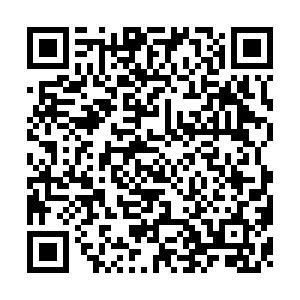| [1] |
Wang Xiaoliang.Tracking non-corporate target in space using multi-platform observation.AIAA 2009-6666,2009
|
| [2] |
Tsai J R.Thermal analytical formulations in various satellite development stages.AIAA 2002-3018,2002
|
| [3] |
薛丰廷,汤心溢.空间目标瞬态温度特性研究[J].激光与红外,2008,38(3):223-225
Xue Fengting,Tang Xinyi.Study on the transient temperature of the space target[J].Laser & Infrared,2008,38(3):223-225(in Chinese)
|
| [4] |
张小英,朱定强,蔡国飙.中段弹头表面温度及辐射特性的计算研究[J].光学技术,2009,35(1):6-9
Zhang Xiaoying,Zhu Dingqiang,Cai Guobiao.Calculating the temperature and radiation characteristics of midcourse ballistic missile[J].Optical Technique,2009,35(1):6-9(in Chinese)
|
| [5] |
Patrik H.Models for scattering of light from rough surfaces with applications in IR signature simulations//Proc SPIE 5431.Orlando,FL,USA:SPIE,2004:222-232
|
| [6] |
张伟,汪洪源,王治乐,等.空间目标可见光散射特性建模方法研究[J].光子学报,2008,37(12):2462-2467
Zhang Wei,Wang Hongyuan,Wang Zhile,et al.Modeling method for visible scattering properties of space target[J].Acta Photonica Sinica,2008,37(12):2462-2467(in Chinese)
|
| [7] |
Li Hongsong,Torrance K E.An experimental study of the correlation between surface roughness and light scattering for rough metallic surfaces//Proceedings of SPIE.Bellingham,WA:,2005:1-15
|
| [8] |
Mill J D,Stair J T.MSX design driven by targets and backgrounds.AIAA 97-0308,1997
|
| [9] |
石良臣,蔡国飙,朱定强.空间飞行器红外光学信号的模拟[J].宇航学报,2009,30(1):229-234
Shi Liangchen,Cai Guobiao,Zhu Dingqiang.The simulation to infrared signatures of spacecraft[J].Journal of Astronautics,2009,30(1):229-234(in Chinese)
|
| [10] |
闵桂荣.卫星热控制技术 [M].北京:中国宇航出版社,2005
Min Guirong.Thermal control technology of satellite [M].Beijing:China Aerospace Press,2005 (in Chinese)
|
| [11] |
舒锐,周彦平,陶坤宇,等.空间目标红外辐射特性研究[J].光学技术,2006,32(2):196-199
Shu Rui,Zhou Yanping,Tao Kunyu,et al.The study of infrared spectrum of space target[J].Optical Technique,2006,32(2):196-199(in Chinese)
|
| [12] |
陶文铨.数值传热学[M].西安:西安交通大学出版社,2005:28-34
Tao Wenquan.Numerical heat transfer [M].Xi-an:Xi-an Jiaotong University Press,2005:28-34(in Chinese)
|
| [13] |
Jafolla J,Reynolds W.Bidirectional reflectance measurements for high resolution signature modeling//Proc SPIE 3062.FL,USA:SPIE,1997:184-197
|
| [14] |
Jafolla J,Thomas D,Hilgers J.A comparison of BRDF representations and their effect on signatures.DA0704-0188,1998
|
| [15] |
Shen Wentao,Zhu Dingqiang,Cai Guobiao.Simulation and experimental study of optical properties of spatial targets.IAC-11-C2.9.2,2011
|

 点击查看大图
点击查看大图






 下载:
下载:
